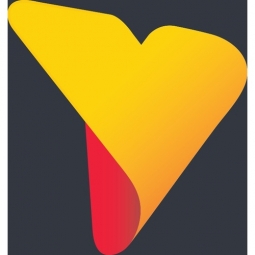公司规模
Large Corporate
地区
- America
- Asia
- Europe
- Pacific
国家
- Australia
产品
- Summit QSR Management System
- Summit Panorama
- Yellowfin BI Platform
技术栈
- Cloud Computing
- Data Analytics
- Sensors
实施规模
- Enterprise-wide Deployment
影响指标
- Productivity Improvements
- Customer Satisfaction
- Revenue Growth
技术
- 分析与建模 - 数据即服务
- 分析与建模 - 预测分析
- 功能应用 - 远程监控系统
适用行业
- 食品与饮料
- 零售
适用功能
- 商业运营
- 质量保证
用例
- 预测性维护
- 实时定位系统 (RTLS)
- 远程资产管理
服务
- 系统集成
- 软件设计与工程服务
关于客户
Summit Innovations is an Australian company that has developed a leading drive-through management system for the quick service restaurant (QSR) industry. Their technology is used by over 95% of new drive-through restaurants in Australia and has been installed in more than 4,000 sites across 20 countries. Their customers include major brands such as Subway, Starbucks, Oporto, Coffee Club, Dunkin Donuts, Red Rooster, Burger King, McDonald’s, KFC, and Hungry Jacks. Summit Innovations aims to enhance the operational performance of drive-through restaurants by providing real-time data and analytics to improve speed of service and reduce waiting times.
挑战
Summit Innovations faced the challenge of optimizing drive-through operations for quick service restaurants (QSRs). The primary issues were monitoring vehicle activity, reducing waiting times, and improving speed of service. The existing system needed to provide real-time data and alerts to help management and staff identify and respond to bottlenecks. Additionally, there was a need for a more sophisticated data analysis and reporting system to compare efficiency across different properties and improve overall operational performance.
解决方案
Summit Innovations implemented a sensor-driven technology that monitors vehicle activity from entry to departure in the drive-through. The data collected is displayed visually on monitors within the restaurant, providing real-time information on speed of service and bottlenecks. The system also offers alerts, management reporting, and enables brands to compare efficiency across different properties. To enhance their offering, Summit integrated the Yellowfin BI platform into their system, creating a new product called Summit Panorama. This integration allowed for more data to be captured, analyzed, and shared across multiple sites, providing mobility to the data and enabling management to receive push notifications and alerts in real-time.
运营影响
数量效益

Case Study missing?
Start adding your own!
Register with your work email and create a new case study profile for your business.
相关案例.

Case Study
The Kellogg Company
Kellogg keeps a close eye on its trade spend, analyzing large volumes of data and running complex simulations to predict which promotional activities will be the most effective. Kellogg needed to decrease the trade spend but its traditional relational database on premises could not keep up with the pace of demand.

Case Study
HEINEKEN Uses the Cloud to Reach 10.5 Million Consumers
For 2012 campaign, the Bond promotion, it planned to launch the campaign at the same time everywhere on the planet. That created unprecedented challenges for HEINEKEN—nowhere more so than in its technology operation. The primary digital content for the campaign was a 100-megabyte movie that had to play flawlessly for millions of viewers worldwide. After all, Bond never fails. No one was going to tolerate a technology failure that might bruise his brand.Previously, HEINEKEN had supported digital media at its outsourced datacenter. But that datacenter lacked the computing resources HEINEKEN needed, and building them—especially to support peak traffic that would total millions of simultaneous hits—would have been both time-consuming and expensive. Nor would it have provided the geographic reach that HEINEKEN needed to minimize latency worldwide.

Case Study
Improving Production Line Efficiency with Ethernet Micro RTU Controller
Moxa was asked to provide a connectivity solution for one of the world's leading cosmetics companies. This multinational corporation, with retail presence in 130 countries, 23 global braches, and over 66,000 employees, sought to improve the efficiency of their production process by migrating from manual monitoring to an automatic productivity monitoring system. The production line was being monitored by ABB Real-TPI, a factory information system that offers data collection and analysis to improve plant efficiency. Due to software limitations, the customer needed an OPC server and a corresponding I/O solution to collect data from additional sensor devices for the Real-TPI system. The goal is to enable the factory information system to more thoroughly collect data from every corner of the production line. This will improve its ability to measure Overall Equipment Effectiveness (OEE) and translate into increased production efficiencies. System Requirements • Instant status updates while still consuming minimal bandwidth to relieve strain on limited factory networks • Interoperable with ABB Real-TPI • Small form factor appropriate for deployment where space is scarce • Remote software management and configuration to simplify operations

Case Study
Energy Management System at Sugar Industry
The company wanted to use the information from the system to claim under the renewable energy certificate scheme. The benefit to the company under the renewable energy certificates is Rs 75 million a year. To enable the above, an end-to-end solution for load monitoring, consumption monitoring, online data monitoring, automatic meter data acquisition which can be exported to SAP and other applications is required.

Case Study
Coca Cola Swaziland Conco Case Study
Coco Cola Swaziland, South Africa would like to find a solution that would enable the following results: - Reduce energy consumption by 20% in one year. - Formulate a series of strategic initiatives that would enlist the commitment of corporate management and create employee awareness while helping meet departmental targets and investing in tools that assist with energy management. - Formulate a series of tactical initiatives that would optimize energy usage on the shop floor. These would include charging forklifts and running cold rooms only during off-peak periods, running the dust extractors only during working hours and basing lights and air-conditioning on someone’s presence. - Increase visibility into the factory and other processes. - Enable limited, non-intrusive control functions for certain processes.








